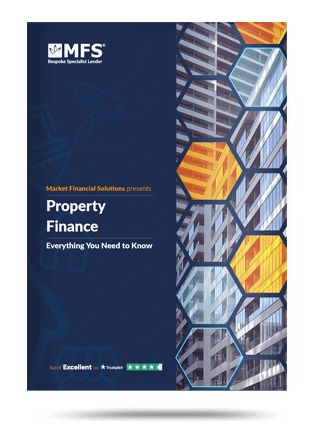Disclaimer
MFS are a bridging loan and buy-to-let mortgage provider, not financial advisors. Therefore, Investors are encouraged to seek professional advice.
The information in this content is correct at time of writing.

Britain is struggling to build. The UK faces a notorious undersupply of housing, affecting renters and buyers alike. The reasons for our collective inability to build enough suitable, and desirable homes is manyfold. Rising costs don’t help, and nimby-ism is rife in the UK. But few things affect developers and the wider property market than our overall planning system.
Various planning permission changes have been implemented over the years, both restricting and opening up what developers can do. For builders and property investors, it’s crucial to understand not only the history of these planning rules, but also new rules that could be on the horizon.
Source: The Telegraph, This is Money
A brief history of planning permission changes
No matter how you look at it, the UK lags in its housebuilding efforts. Around 10% of our GDP is spent on building, compared with a G7 average of 12%, according to the Economist. In England alone, there are 434 dwellings per 1,000 people. By comparison, France has 590, according to the OECD.
Many experts and commentators put this down to our restrictive development rules. In some way, shape or form, legislation has always been in place to determine what can be built, and where. However, the system has been consistently tightened since the post-war years.
Towards the end of the second world war, Britain was focused on the reconstruction of its towns and communities. Additionally, plans were in the works for creating entirely new cities. To get the ball rolling on this, the 1946 New Towns Act established a programme for the development of new towns. This act provided the state with the power to designate areas of land for new projects. Stevenage emerged as the first new town created under the act. However, the 1947 Town and Country Planning Act quickly followed, pumping the breaks a bit, and limiting urban sprawls.
All developments became subject to planning permissions, which were to be issued out by local councils. Duncan Sandys, the prominent Conservative minister, set the tone for how councils should use their powers. In 1955, he implored local authorities to forbid building on the edge of cities in order to: “a) check the further growth of a large built-up area; b) prevent neighbouring towns from merging into one another; or c) preserve the special character of a town”.

Rules started to be eased from the 1990s
Understanding where these rules came from is important. But investors may be more concerned with what planning permission changes affect them now. If we fast forward to the 1990s, we can see that some of these restrictions were – somewhat – eased. The Town and Country Planning Act was updated in 1990. Planning permission would only be needed where work was carried out on projects that met a statutory definition of “development”. Interior alterations, changes in the primary use of land or buildings, and changes which didn’t alter the external appearance of buildings could all be done without the need for council approval.
In 1995, a General Permitted Development order was implemented, providing developers with more options. Albeit, these still primarily concerned alterations on existing properties, as opposed to allowing the development of new buildings. However, in 2013, the Government appeared to recognise there was a clear need for more residential spaces.
These planning permission changes were tweaked once more to allow the conversion of certain commercial properties into residential homes. Offices and the like could be turned into flats without the need for planning permissions. Following this, a wave of commercial-to-residential conversions emerged. While likely helpful for the wider market, these changes also brought forward several property “cowboys”. Some developers ended up creating tiny flats, dubbed by many to be the “slums of the future”.
Source: The Economist, UK Parliament, Gov.uk, Designing Buildings, Designing Buildings, Buckles-Law, Inside Croydon
Most recent planning permission changes
To raise standards, the Government continued to tweak the rules up until 2020/21, when the latest changes to permitted development rules were made. In response to the impact of covid, the rules were expanded to allow more types of commercial conversions. This included gyms and medical facilities, many of which laid empty after the pandemic.
Currently, people will generally need planning permission if they want to build something new, make a major change to a building (such as an extension), or change the use of a building. This could cover a broad range of scenarios and each council will have differing criterions. Fortunately, a dedicated Planning Portal exists which aims to make the planning process simpler for applicants, agents or local authorities themselves.
Source: Planning Portal
What does the future have in store?
Looking ahead, there could be more planning permission changes on the way. Michael Gove’s Levelling Up Bill has received royal assent, bringing with it many property reforms.
Specifically, the government is aiming to allow homeowners to build wider, taller extensions and larger loft extensions without planning permission, contain the short-let market, and build on brownfield sites.
While public plans often change with the times, overall, the current administration appears keen to support development and help the market expand. The best answers to what are the changes to planning permission rules may still have time to present themselves.
Source: The Planner, Department for Levelling Up, Housing & Communities, The Telegraph, CoStar, Gov.uk, Ministry of Housing, Communities & Local Government, The Telegraph, Financial Times, Housing Today
The Complete Guide to
Property Finance
Everything you need to know
- Foundation & different finance types
- Useful tools
- Apply them in real life
- Market insights & more




